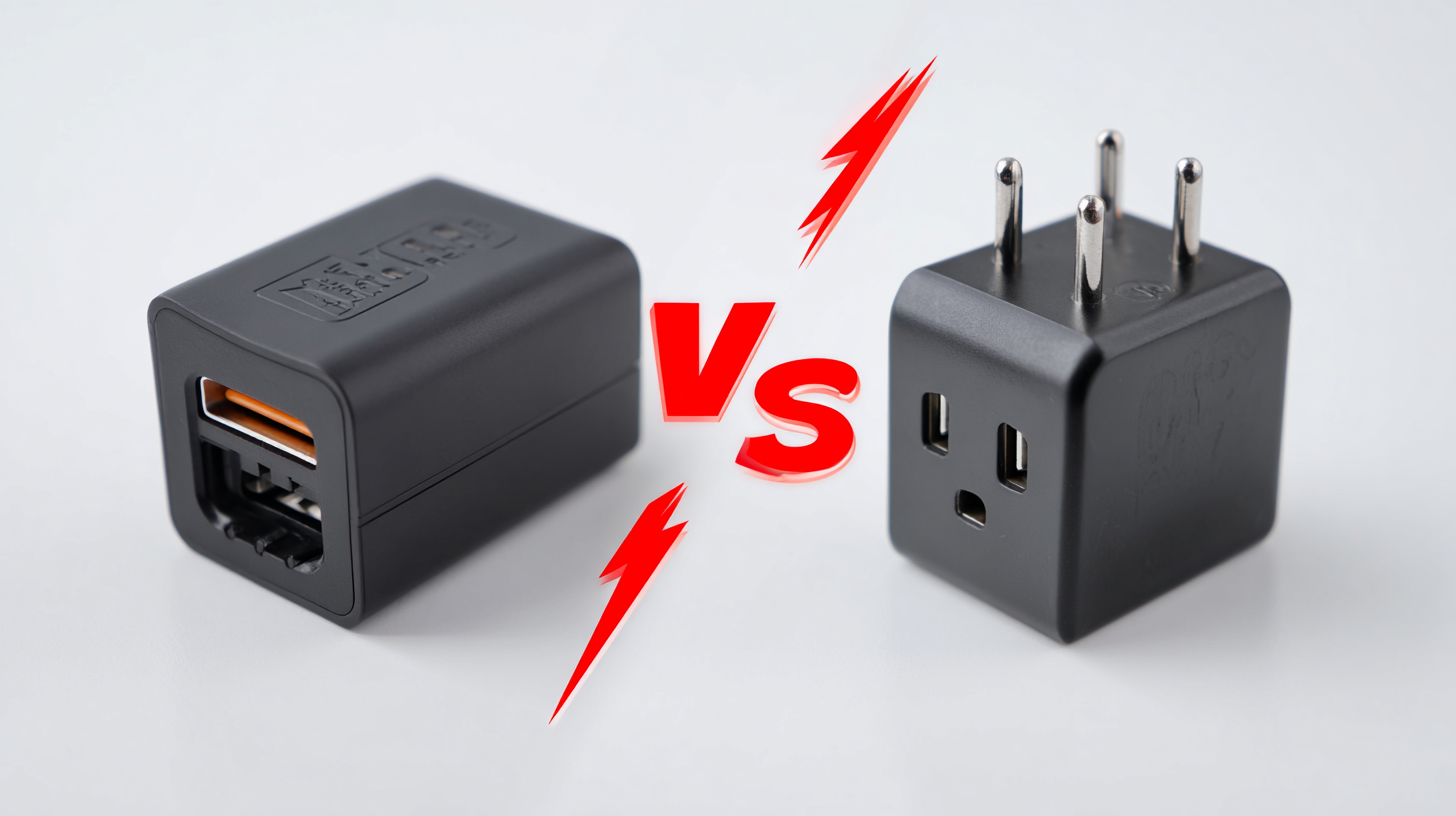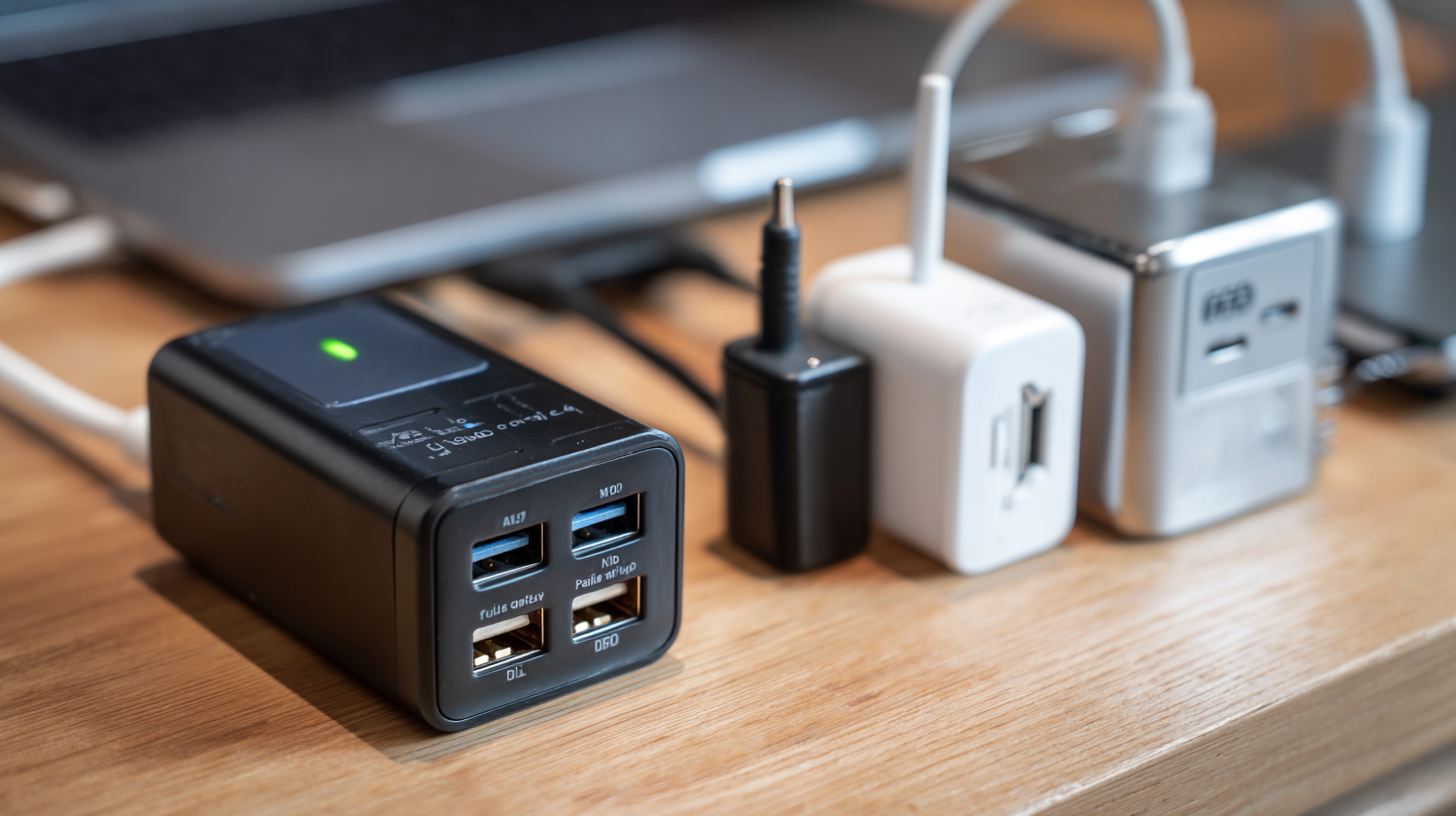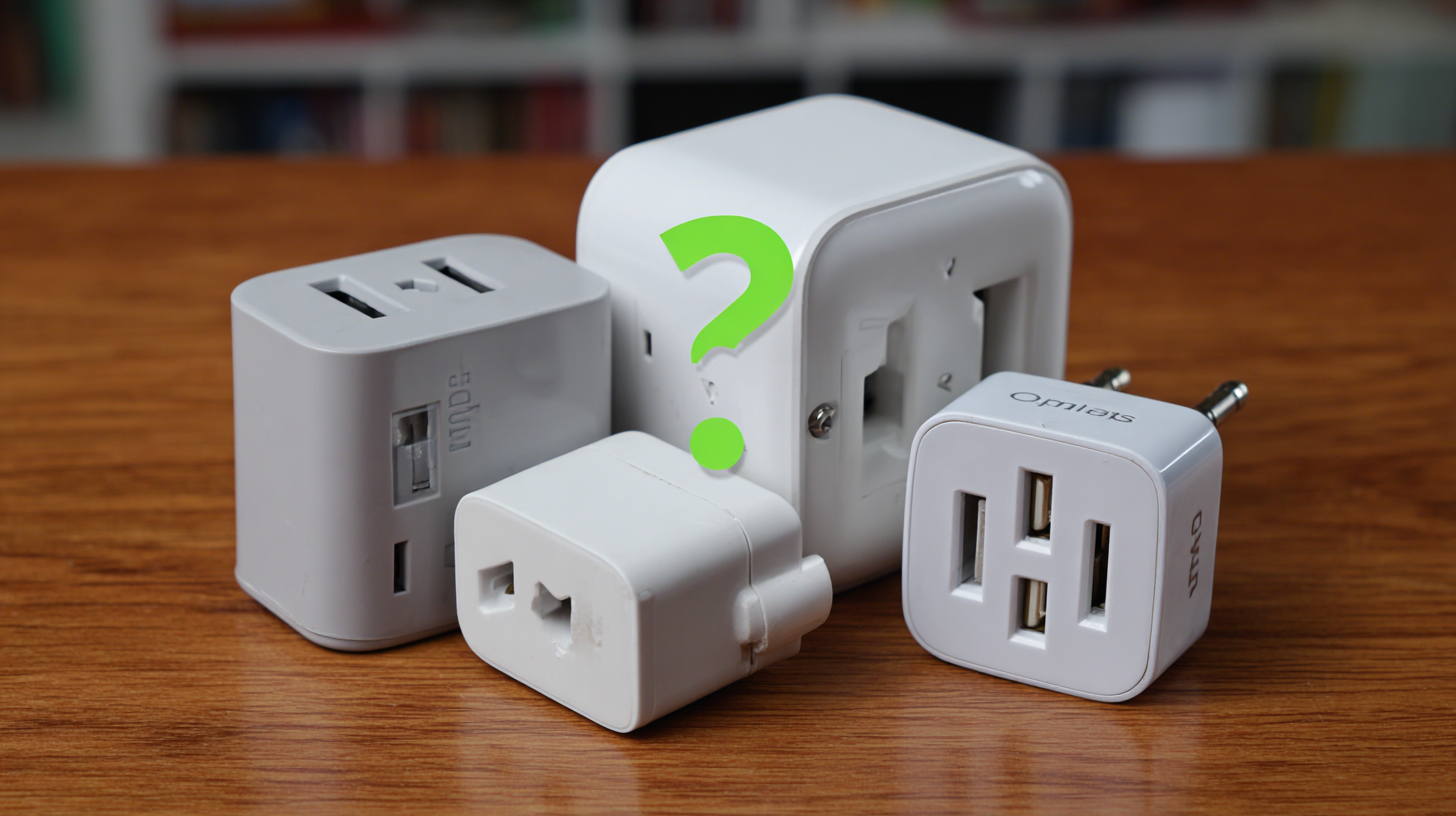Understanding the Best Power Adapter: Types, Features, and Choosing the Right One for Your Needs
In today's technology-driven world, the importance of selecting the right power adapter cannot be overstated. According to a report by MarketsandMarkets, the global power adapter market is projected to grow from $20 billion in 2020 to over $30 billion by 2025, driven by the increasing adoption of consumer electronics and the rise of smart devices. With various types of power adapters available, including wall chargers, USB chargers, and universal adapters, understanding their features and specifications is essential for consumers seeking to maximize efficiency and compatibility with their devices. As we delve into the nuances of power adapters, this guide will help you navigate the complexities of their types, features, and the crucial steps to choosing the right one tailored to your needs.

Types of Power Adapters: An Overview of Common Varieties
When it comes to powering your devices, understanding the various types of power adapters is essential. Power adapters come in a wide range of varieties, each designed to meet specific needs. A common type is the wall adapter, which plugs directly into a standard electrical outlet. These adapters are used for charging laptops, smartphones, and tablets. They typically convert AC (alternating current) from your outlet to DC (direct current), which is what most devices require for powering.
Another prevalent type is the travel adapter, which is essential for those who frequently find themselves in different countries with varying plug types. These adapters can accommodate different plug shapes and voltages, ensuring that your devices can charge safely while you’re on the go. There are also specialized adapters like USB power adapters, which have gained popularity due to the rise of USB-powered devices. These are versatile and can provide a reliable charging option for various gadgets, from Bluetooth speakers to gaming controllers. Understanding these types will help you choose the best option based on your specific requirements and usage scenarios.
Understanding the Types of Power Adapters
This chart illustrates the popularity of various types of power adapters among users. The data reflects millions of users who prefer USB chargers the most, followed by wall adapters, power banks, car chargers, and finally solar chargers. Understanding these trends can help you choose the right power adapter for your needs.
Key Features to Consider When Choosing a Power Adapter
When selecting a power adapter, several key features should guide your decision to ensure compatibility and efficiency. First, consider the voltage and current ratings. It’s crucial to choose an adapter that matches the specifications of your device; using an incorrect voltage can not only lead to malfunction but may also damage your device. A thorough understanding of these ratings, often found on the device’s label, will help you find an adapter that delivers the appropriate power.

Another significant aspect is the type of connector. Different devices come equipped with various plug types, making it essential to verify that the adapter you select has the correct connector for your needs. Additionally, look for adapters with built-in safety features such as overcurrent and overvoltage protection. These features can prevent potential hazards and prolong the lifespan of both the adapter and your device. By keeping these factors in mind, you can confidently choose a power adapter that is both functional and safe.
Understanding Voltage and Amperage: What You Need to Know
When selecting a power adapter, understanding voltage and amperage is crucial in ensuring compatibility and efficiency. Voltage, measured in volts (V), indicates the electrical potential that drives current through a circuit. It’s essential to match the voltage of your adapter with the voltage requirements of your device; using an adapter with too high a voltage can damage your device, while a lower voltage may lead to insufficient power, causing operational issues.
Amperage, measured in amperes (A), reflects the amount of current flowing through the circuit. Each device has a specific amperage requirement, which usually can be found in its specifications. Choosing an adapter with a higher amperage rating than needed is generally acceptable, as devices will only draw the current they require. However, using an adapter with a much lower amperage rating can result in overheating, inefficient charging, or even complete failure. Understanding these two key specifications will guide you in selecting the right power adapter for your needs, ensuring both device safety and optimal performance.
Understanding the Best Power Adapter: Types, Features, and Choosing the Right One for Your Needs
| Adapter Type | Output Voltage (V) | Output Amperage (A) | Power Output (W) | Key Features |
|---|---|---|---|---|
| Wall Adapter | 5 | 2 | 10 | Compact size, universal compatibility |
| Car Charger | 12 | 3 | 36 | Fast charging, multiple ports |
| USB Power Delivery | 20 | 3 | 60 | Supports fast charging, high compatibility |
| Laptop Adapter | 19 | 4.74 | 90 | Lightweight, over-current protection |
| Multi-port Charger | 5 | 2.4 | 12 | Multiple USB ports, travel-friendly |
Tips for Selecting the Right Power Adapter for Your Devices
 When selecting the right power adapter for your devices, there are several key factors to consider. First, it’s crucial to evaluate the voltage and current specifications. According to a 2022 market research report by Technavio, improper voltage can lead to device damage or decreased performance, emphasizing the importance of matching your device's requirements with the adapter's output. For instance, smartphones typically require 5V with varying amperage, while laptops might need 19V or higher. Always check the device labels or manuals for these important details.
When selecting the right power adapter for your devices, there are several key factors to consider. First, it’s crucial to evaluate the voltage and current specifications. According to a 2022 market research report by Technavio, improper voltage can lead to device damage or decreased performance, emphasizing the importance of matching your device's requirements with the adapter's output. For instance, smartphones typically require 5V with varying amperage, while laptops might need 19V or higher. Always check the device labels or manuals for these important details.
Another critical aspect is the type of plug and compatibility with international standards. The International Electrotechnical Commission (IEC) states that using an incompatible adapter can lead to not only inefficiencies but also safety hazards. As the global market adapts to more versatile devices, the demand for universal power adapters has surged. Consumers should also consider features such as surge protection, cable length, and compact design for travel. With a growing emphasis on sustainability, opting for energy-efficient models can significantly reduce electricity consumption, with reports indicating a potential 30% reduction in energy use with high-efficiency adapters.
Safety Considerations and Certifications for Power Adapters
 When selecting a power adapter, safety considerations and certifications are paramount. According to a recent market analysis by Research and Markets, the global power adapter market is projected to reach $25 billion by 2026, emphasizing the increasing reliance on these devices across various industries. As the adoption of IoT devices and smart technologies grows, so does the need for adapters that meet stringent safety standards. For instance, UL (Underwriters Laboratories) and CE (Conformité Européenne) certifications are critical indicators of a power adapter's safety and performance. These certifications ensure that the products have undergone rigorous testing and adhere to both international and local safety requirements.
When selecting a power adapter, safety considerations and certifications are paramount. According to a recent market analysis by Research and Markets, the global power adapter market is projected to reach $25 billion by 2026, emphasizing the increasing reliance on these devices across various industries. As the adoption of IoT devices and smart technologies grows, so does the need for adapters that meet stringent safety standards. For instance, UL (Underwriters Laboratories) and CE (Conformité Européenne) certifications are critical indicators of a power adapter's safety and performance. These certifications ensure that the products have undergone rigorous testing and adhere to both international and local safety requirements.
Moreover, the significance of overcurrent and overvoltage protection cannot be overstated. A report from the International Electrotechnical Commission (IEC) highlights that approximately 30% of electrical fires are attributed to inadequate safety features in power adapters. Therefore, consumers should be vigilant about choosing adapters that come with built-in safeguards. These features not only protect connected devices but also enhance user safety. In a rapidly evolving tech landscape, prioritizing certified and reliable power adapters is essential to mitigate potential hazards associated with electrical malfunctions.
